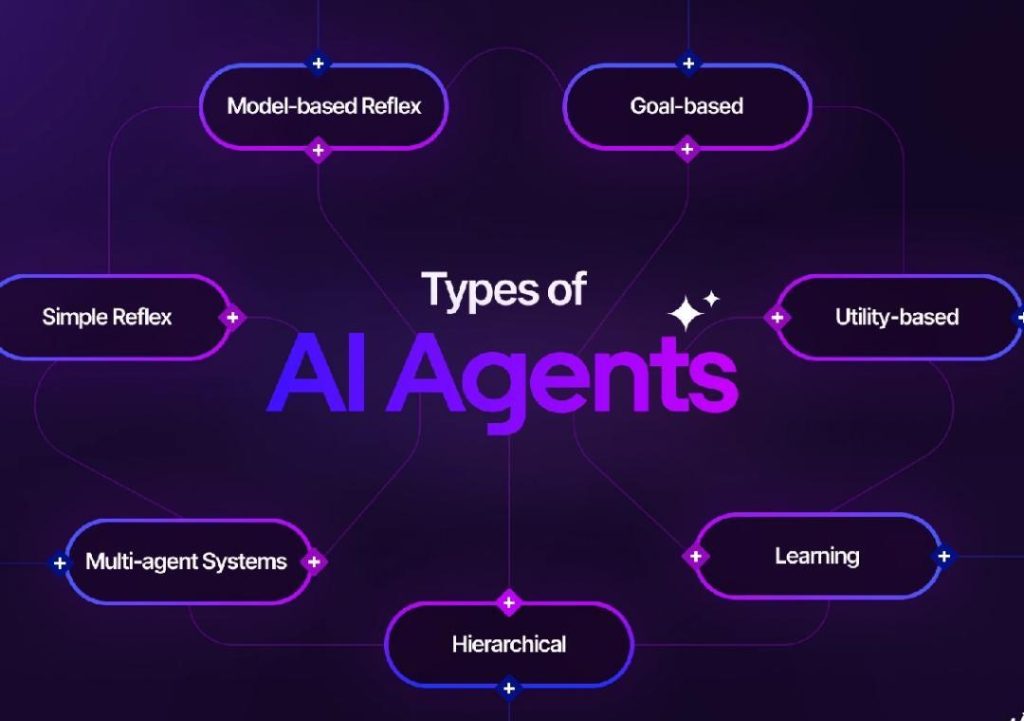
What AI Agent Fits Your Automation Goal?
In the realm of artificial intelligence, AI agents are the backbone of automation. These intelligent entities can range from simple rule-based bots to sophisticated systems that learn and adapt over time. With so many types of AI agents available, it can be overwhelming to determine which one best fits your automation goals. In this post, we’ll break down the different types of AI agents, their characteristics, and use cases to help you make an informed decision.
Reflex Agents: The Simplest of the Bunch
Reflex agents are the most basic type of AI agent. They react instantly to their environment without any prior thought or deliberation. These agents are ideal for simple, repetitive tasks that require minimal processing power. For example, a reflex agent might be used to automatically redirect phone calls to different departments based on the caller’s identity.
Characteristics:
- Reacts instantly to stimuli
- No memory or learning capabilities
- Simple decision-making processes
Use Cases:
- Simple input-action tasks
- Automated workflows with fixed rules
- Low-complexity decision-making
Model-Based Agents: The Thinkers
Model-based agents use memory and past experiences to inform their decisions. These agents can learn from their environment and adapt to new situations, making them more effective in complex tasks. For instance, a model-based agent might be used to analyze customer behavior and adjust marketing strategies accordingly.
Characteristics:
- Uses memory and past experiences to inform decisions
- Can learn from the environment
- More complex decision-making processes
Use Cases:
- Analyzing customer behavior
- Predicting outcomes
- Adaptive decision-making
Goal- or Utility-Driven Agents: The Optimizers
Goal- or utility-driven agents are designed to optimize outcomes. These agents consider multiple factors and weigh their importance to make decisions that best achieve a specific goal. For example, a goal-driven agent might be used to manage inventory levels to minimize costs and maximize profits.
Characteristics:
- Optimizes outcomes based on goals or utility functions
- Considers multiple factors
- Complex decision-making processes
Use Cases:
- Resource allocation
- Inventory management
- Supply chain optimization
Learning Agents: The Adapters
Learning agents are designed to adapt to new situations and learn from their experiences. These agents can update their behavior based on new data and adjust their decision-making processes accordingly. For instance, a learning agent might be used to optimize marketing campaigns based on customer feedback.
Characteristics:
- Adapts to new situations and learns from experiences
- Updates behavior based on new data
- Complex decision-making processes
Use Cases:
- Evolving workflows
- Dynamic decision-making
- Personalized customer experiences
Choosing the Right AI Agent for Your Automation Goal
When selecting an AI agent for your automation goal, consider the task complexity and the level of adaptability required. Simple input-action tasks require a reflex agent, while evolving workflows demand learning agents that can grow with your business.
Here’s a simple framework to help you choose the right AI agent:
- Task Complexity: Determine the level of complexity involved in the task.
- Adaptability: Consider the level of adaptability required by the task.
- Processing Power: Determine the processing power required to execute the task.
- Decision-Making: Evaluate the type of decision-making required by the task.
By considering these factors, you can choose the right AI agent to automate your tasks and achieve your goals.
Conclusion
The world of AI agents is vast and complex, with each type offering unique characteristics and use cases. By understanding the different types of AI agents and their characteristics, you can make informed decisions about which agent best fits your automation goals. Whether you need a simple reflex agent or a sophisticated learning agent, there’s an AI agent out there that can help you achieve your goals.
Source:
https://www.growthjockey.com/blogs/ai-agents-types-stack-use-cases






